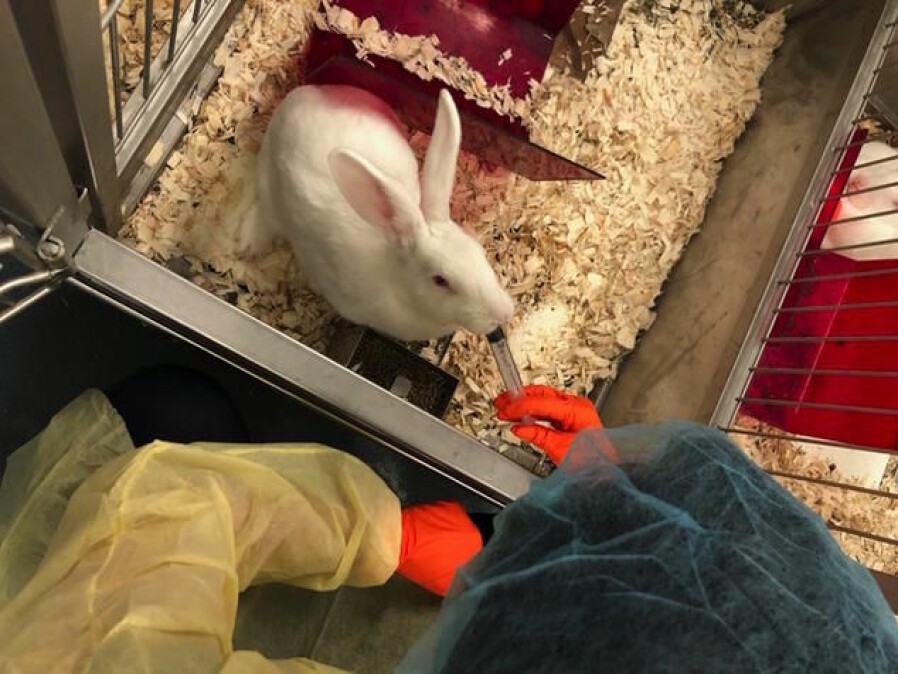This article is produced and financed by The Centre for Advanced Study (CAS) - read more

Female orgasm: an evolutionary emancipation of women’s sexuality?
CAS Fellow Mihaela Pavličev suggests that the female orgasm once had a reproductive function, but then lost it.
Unlike the male orgasm, the female orgasm does not have any direct reproductive function.
Women do not have to have an orgasm in order to conceive.
“This makes the female orgasm very intriguing in evolutionary biology”, says Mihaela Pavličev, Professor of evolutionary biology at the University of Vienna.
This year, she is a CAS Fellow on the project Evolvability: A New and Unifying Concept in Evolutionary Biology?
Pavličev’s research poses intriguing questions about human sexuality. If the female orgasm does not have a reproductive function, why did it originate in evolution? And why does it still exist?
Back in 2016, she and her colleague Günter Wagner, also a CAS Fellow, published an article that, with coverage in the New York Times and the Guardian, to mention just a few, gained a lot of attention.
The researchers suggested that female orgasm is an evolutionary hangover, as the Guardian put it.
Now the researchers have tested this hypothesis and found support for the belief that the female orgasm had a reproductive function in the past, but lost it.
Again, the female orgasm is in the news worldwide.
Reproductive function lost when ovulation cycle evolved
Before explaining to a bunch of colleagues eating their lunch at CAS what the journalists mean by an 'evolutionary hangover', Pavličev says it is important to define what orgasm is.
In order to explain evolutionary change of a trait, it is most helpful to establish a comparison with the same trait in other animal species.
“This is important because when we are looking at the evolutionary history of a specific trait, for example human orgasm, we have to accept that we perhaps won’t find it in that specific form in other animals”, she says.
Traits with shared evolutionary origins stand in a special relation to each other, known in biology as homology; the comparable traits are called homologs.
For instance, in relation to this research Pavličev is often asked 'do rabbits have orgasms?'
“Rabbits do not necessarily have orgasm as we define orgasm in humans, but that does not mean that the homolog of this trait does not exist”, she explains.
She defines orgasm as a neuroendocrine reflex that is triggered by genital stimulation. 'Neuroendocrine' means that the stimulation generates a neural signal which in turn triggers the release of hormones that accompanies orgasm in humans.
“In rabbits, and many other mammals, ovulation is triggered by copulation”, she explains.

In their paper from 2016, Pavličev and her colleagues argued that the neuroendocrine reflex that underlies the female orgasm once had a reproductive function, namely inducing ovulation.
“This function was lost when the endogenously regulated ovulation cycle evolved”, she explains; this set of changes also led to the monthly reproductive cycle we now know in women. In other animals, ovulation is not regular in frequency, but is instead induced on an 'as-needed basis' by copulation.
The 2016 article was based on existing literature. In their more recent article, 'An experimental test of the ovulatory homolog model of female orgasm', published in September of this year, the researchers present the results of testing their hypothesis.
Rabbits on Prozac
How could researchers find out whether the female orgasm had a reproductive function in the past?
The underlying idea is that if two traits observed in different groups of animals – in this case the induction of ovulation and the female orgasm – are indeed homologous, they will react to the same perturbation.
Well, previous research has shown that a specific group of antidepressants (SSRIs) reduce the human ability to reach orgasm. Pavličev and her team reasoned that, if orgasm is indeed homologous to the induction of ovulation, then Prozac would affect ovulation in animals such rabbits, in which ovulation is induced by copulation.
“We gave half of our rabbits Prozac for 14 days, and the other half was the control group. Ninety percent of them actually mated within ten seconds”, she says, laughing, and describes rabbits as ‘very easy to work with’.
After one day, the researchers looked at the rabbits’ ovaries and counted ovulated follicles.
“There was a significant effect. We saw that compared to the control group, which were not given Prozac, there was a 30 percent decrease in ovulation in the treated group”, Pavličev explains.
What does this mean for society?
“The way I like to think about this evolutionary transition from the reflex having reproductive function to not having it, is that human female sexuality associated with orgasm has been freed from its reproductive role”, Pavličev says. She cites Sigmund Freud’s influential misconception about a connection between a woman’s ability to orgasm and mental maturity as a warning concerning how dangerous pseudo-knowledge about sexuality can be.
“If you were not able to climax vaginally, you were, according to Freud, defective and immature. Not getting orgasm was associated with a mental defect. This was not a long time ago”, she says.
“We showed instead, that not climaxing vaginally is an evolutionary consequence of change in reproductive physiology, which is accompanied with change in genital anatomy, making orgasm substantially more unlikely with vaginal stimulation alone.”
There are many questions left to be answered, Pavličev says: What functions may have newly evolved in humans that are not present in other mammals? What changed first, ovulation or anatomy?
“It also seems that the same reflex has been recruited for a different function in rodents, so I would like to know whether this is really also a homolog. Not to mention, there are so many more things to figure out with respect to female reproduction!”































